When planning your Everest Base Camp trek, it is important to know what food will be available to you along the route and what food you'll need to bring yourself.
For most trekkers, the EBC hike is completed using tea houses, although some trekking companies and guides offer camping expeditions.
This article is written from a tea house perspective and covers the FAQ about food and water options on an Everest Base Camp trek.
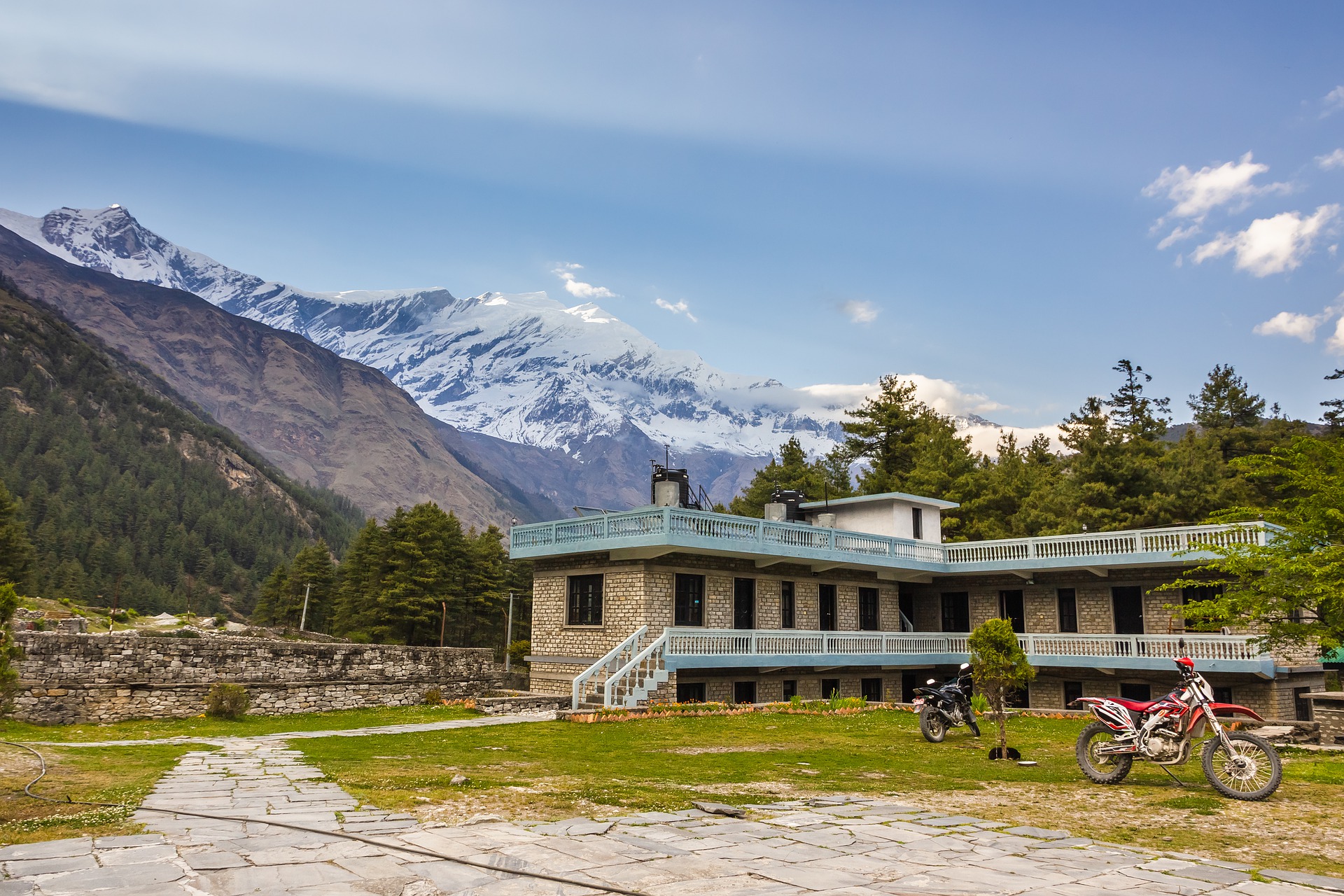
EBC Trek Food and Drink FAQs
Before beginning your Everest Base Camp Trek, there are several food and drink-related questions you first need to ask.
Can you eat meat?
The first thing to consider is that the Everest Base Camp trek is located in a Hindu area where slaughtering animals is prohibited.
For this reason, meat and egg products are flown in from Kathmandu to Lukla where they are then transported on foot by porters, yaks and cattle.
Because of this, food in the tea houses along the trek will generally be more expensive than food in the main cities like Kathmandu and Pokhara.
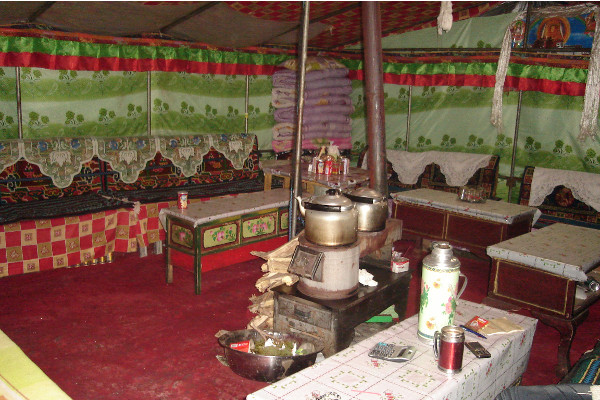
Typical tea house interior
How fresh is the food?
Because meat and eggs have to be walked in, the overall freshness of food products is often a problem. Trekkers often complain that food is not as fresh as they would wish.
Although in some cases this can't be avoided, the best option is to pick tea houses that are crowded.
These establishments usually receive more deliveries due to their popularity and high volume of visitors. Always ask your guide to check the freshness of the meat before sitting down to eat.
The season you're trekking in will also make a difference as tea house are less well stocked out of season.
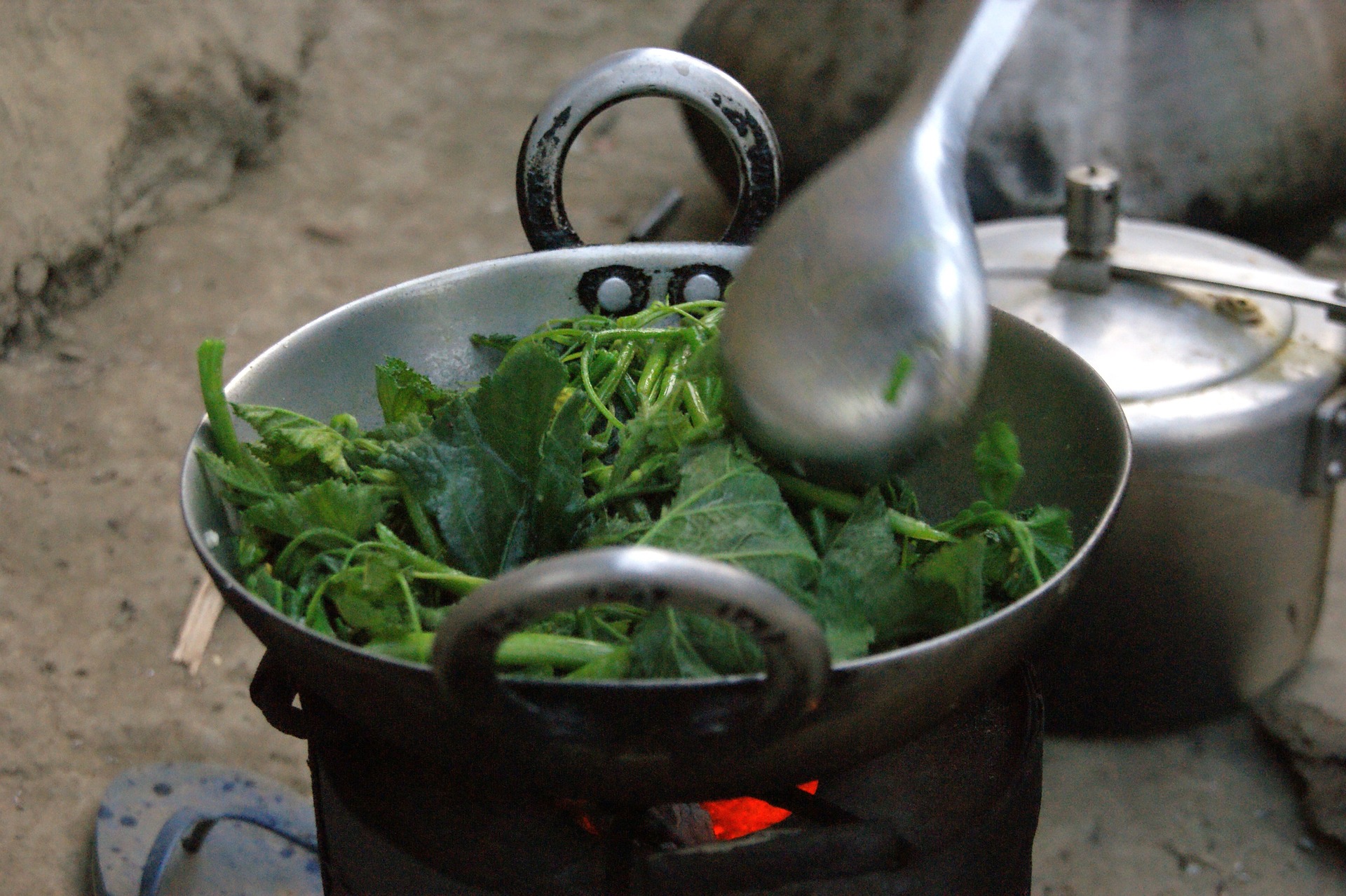
Will there be fish, vegetables or fruit?
Fish is very rare along the trek, only the very fancy tea houses will supply any form of sea food. These places are more expensive and will not always have stock.
Because of the altitude, fresh vegetables and fruit is exceedingly hard to come by and you should expect to get your five a day through the vegetarian dishes available in every tea house.
Be warned that in Nepalese tea houses, the word 'vegetable' actually means spinach like green leaves.
What can I drink on the trek?
Any good company or guide will supply filtered water; however, bottled water can be purchased at most tea houses and shops along the route.
Because of the altitude, it is recommended you drink in the region of 3-4 litres per day, although this can include tea and soup. Tea houses will generally serve tea and other well-known branded drinks. Tea pots will usually come in three sizes - small, medium and large.
Large will be anything from 1 - 2 litres. No matter the size of tea pot you order, you will only get 1 tea bag. Your best bet is to bring your own tea bags.
If you order tea, please remember that most tea houses will get the water from a local stream and boil it. If you are not comfortable with this, then we suggest taking some water purification tablets. Tap water is not recommended for foreigners.
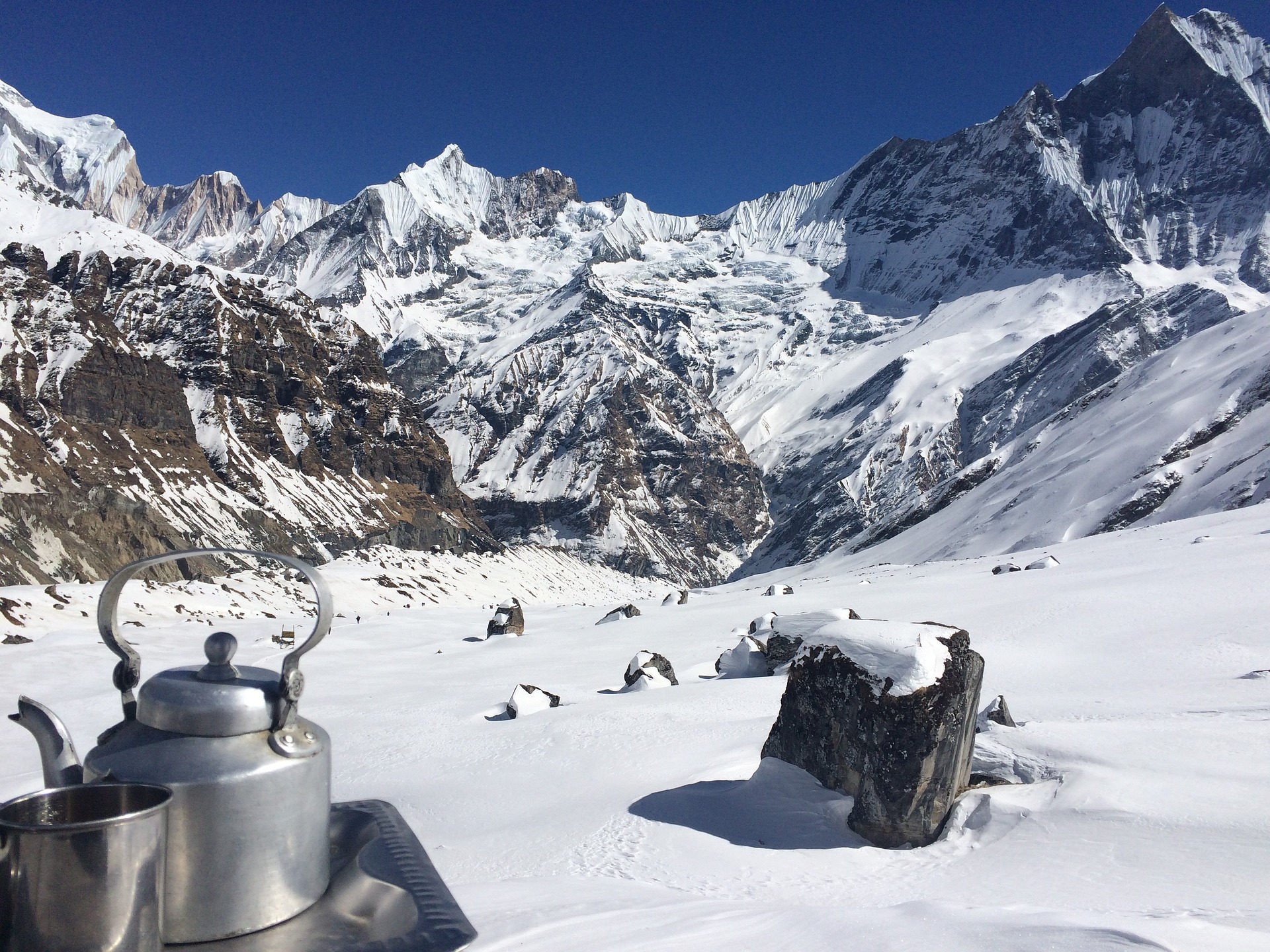
Do the menus have a wide array of dishes?
The simple answer is no. The location and altitude means that very few crops can be grown and only a certain amount of food can be brought in on foot.
Therefore, the selection of food is limited to the most popular dishes. Most tea house menus will be dominated by cereal and flour products.
These usually include bread, porridge, pancakes, fries, rice, dumplings, pasta, beans etc.
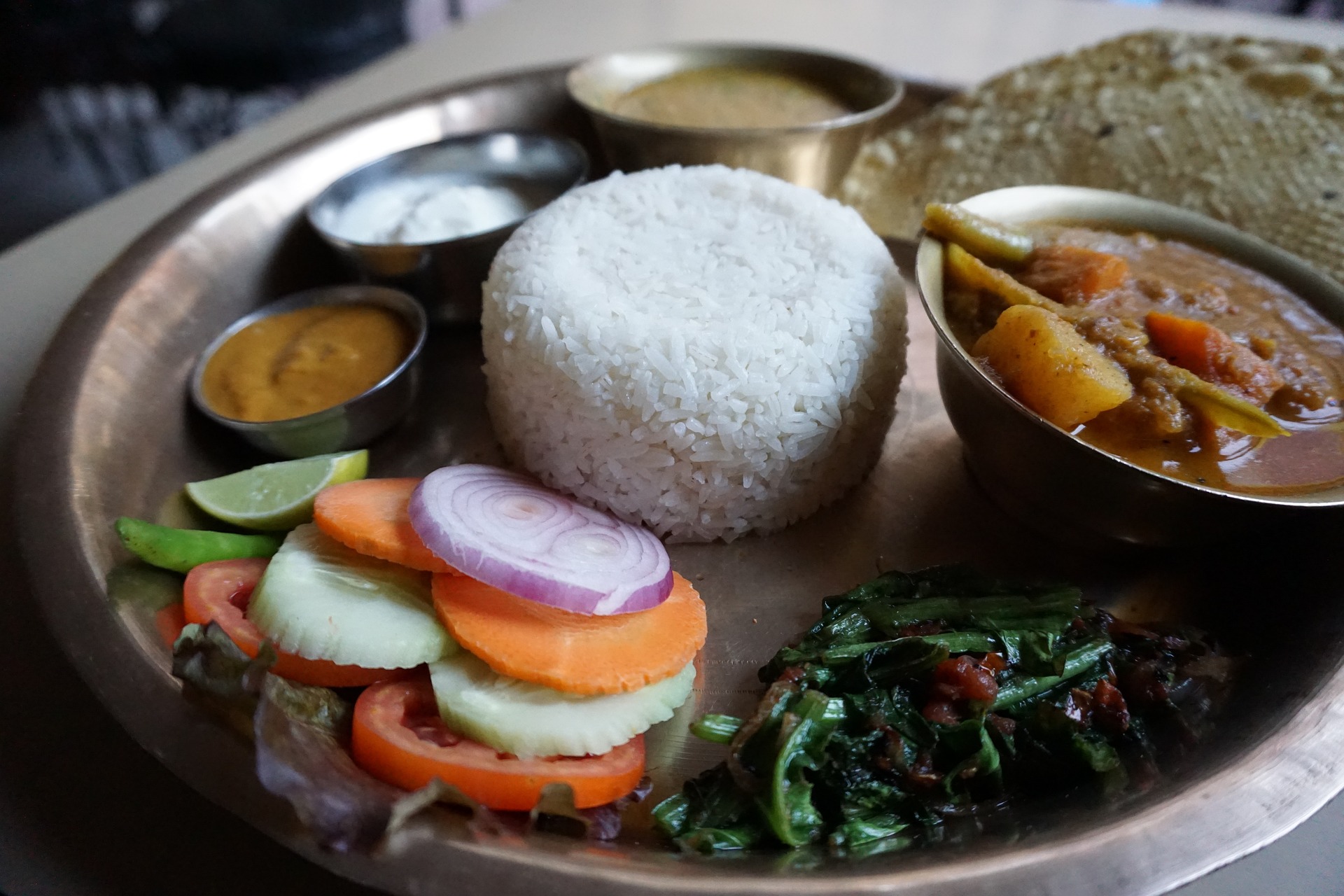
Will I get three meals a day?
On an Everest Base Camp trek, you will always be able to get three meals a day.
On some of the more remote Nepal hiking routes, lunch is sometimes lost. You will breakfast around 8am in the lodge you slept in.
Breakfast will always be made up of tea, juice and porridge. Most tea houses will also offer french toast with an assortment of jams. If you're lucky, the tea house will also supply a cooked meal option of eggs and hash browns.
You will usually pass several tea houses during the day, one of which you will stop at for lunch. It will be up to your guide to decide on the best one. Lunch is usually similar to dinner, and you will be presented with a good set of options.
The most popular dishes include Dal Bhat, garlic soup, pasta, pizza and yak steak. Dal Bhat is a local dish that is very nourishing and gives you great energy for the rest of the day. It it believed by locals that Garlic soup is a natural remedy in preventing altitude sickness.
Dinner will usually be the same menu as lunch. You will normally arrive at your tea house for the night between 4 and 6pm. It is important to book a table for dinner as soon as you arrive as the popular trekking houses fill up quickly. Your guide should have already booked your accommodation.
The sun sets very quickly in the mountains and dinner often starts with a big pot of black tea before the main meals are brought out. The dining room and common room are usually packed with people all evening, talking, drinking tea and drinking beer.
Popular Everest Base Camp Trek Meals
Dal Bhat
A staple dish throughout the Himalayas. Dal Bhat consists of steamed rice and a lentil soup. The lentil soup is generally cooked with a mix of garlic, chili, ginger, tomato, onion and tamarind. The dish is popular among trekkers for its nourishment and strong flavour.
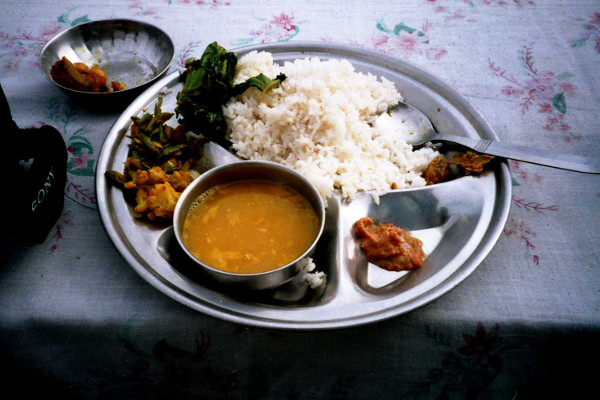
Dhal Bhat
Garlic soup
Thought to prevent altitude sickness, garlic soup is found in most tea houses. Its powerful flavour and health benefits make it a favourite among hikers. Together with Tibetan bread or Chapatti, garlic soup is a light and refreshing meal, especially at lunch!
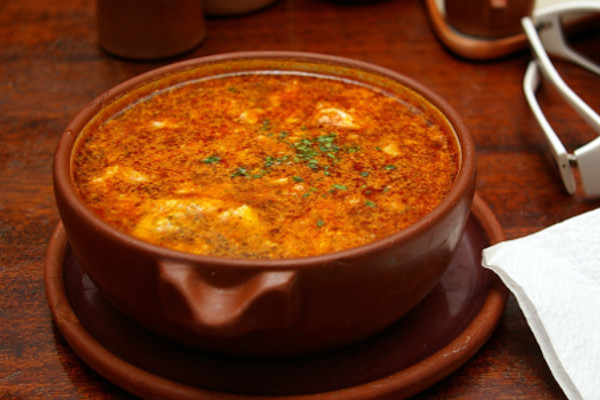
Garlic Soup
Yak Steak
If you love meat, then you can't go past a yak steak! Check with your guide how fresh the meat is first. Yak steak will often be served with a lovely blue cheese sauce or similar and the distinctive flavour is a wondrous thing when cooked well. The land lady will lay your table with paper before bringing out the sizzling and spitting streak.
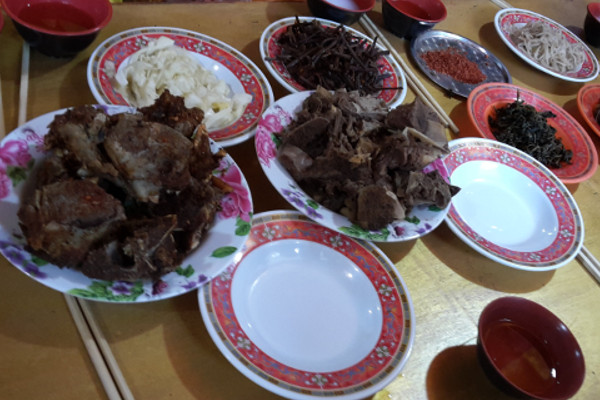
Yak Steak
Yak cheese
For all fans of cheese, this is a lovely, creamy cheese made from the milk of yaks. Not only is it very tasty, but yak cheese has three times the omega fat of cheddar cheese and is rich in alpha-linolenic acid (ALA).
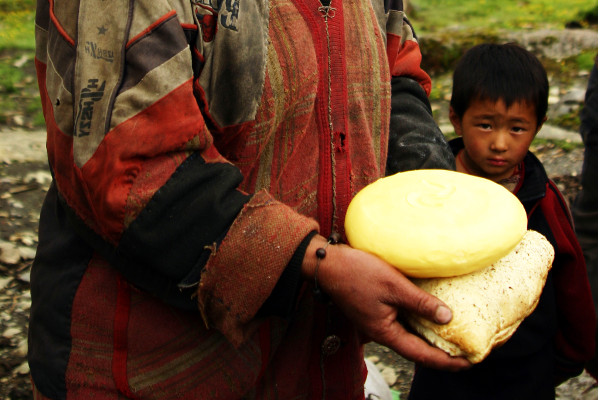
Yak Cheese
Nepalese bread
Served with most meals, Nepalese bread is cooked in-house and reminds you of the base of a pizza. Its grainy texture tastes amazing when hot and is the perfect accompaniment to a nice cheese or soup.
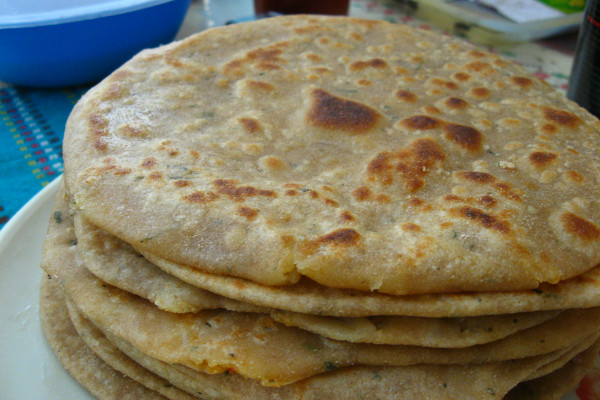
Nepalese Bread
Momo (Dumplings)
In recent years, Momo has become a popular local delicacy in Nepal. Similar to Chinese dumplings, momos are steamed buns that contain a tasty filling of meat that are served with a selection of condiments. Perfect for a light snack.
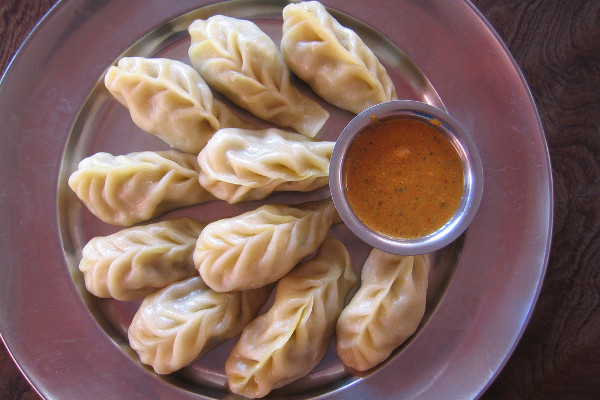
Momo Dumplings
FAQ
If you have any further question or queries regarding food and drinking water on an Everest Base Camp Trek, please just leave us a message below and we'll reply as soon as possible.
Thank you and happy trekking!
Continue browsing
See more information on Nepal. Or check out these other Everest/Nepal articles:

are there any shops near by where you can find an authentic nalgene bottle? lost mine on the flight and so far only finding fakes
Unfortunately, most gear in Nepal is fake. You might have better luck in Thamel, Kathmandu, but on the trail you’re only likely to find rip-offs.
What water purification tablets do you recommend for taste and effectiveness? We are making the EBC trek in late October. Thanks.
These are good: https://amzn.to/3z6ec13. None taste great unfortunately so I recommend adding some gatorade for taste.
Hi!
With regards to drinking water… I have watched videos of people doing the EBC trek and they said that, the higher up they went, their water froze overnight (as did all the plumbing in the teahouse!).
I suspect that the frozen water can be boiled in the morning so that you have something to drink (is this right?) but what about after a few hours of trekking? Surely the water will freeze again?
I have found that I can get an insulated tube for my hydration bladder, and an insulated pouch, but I am reluctant to spend the money as I doubt I will be in freezing conditions again after my trek!
How can you drink water in freezing conditions??
Thanks!
Hi Kirsty, yes, water can freeze higher on the trail. It generally thaws by late morning / early afternoon though, but teahouses will also offer boiled water should you need to refill. In terms of avoiding frozen water just make sure that you don’t leave your water bottle or hydration bladder exposed during the night (i.e. keep it in your bag).
Thanks for all the info! When trekking in a group of 4-6 and on your own in May…..do you need to book the tea houses ahead on annapurna circuit and sanctuary and gokyo treks?
Hi Lisa, May is a busy period on both treks but generally you will be able to find availability at teahouses – most don’t take forward bookings. One way to book ahead is to use a tour operator or employ the services of a guide or porter who can rush ahead each day and secure the best teahouses.
Hi, can you just simply buy lunch and dinner at each stops at the tea houses? My program only includes accomodation and breakfast for EBC!
Hi Ryan, yes, all teahouses have kitchen’s and serve breakfast, lunch and dinner.
Hi, thanks for your post! if my program with a porter/guide only provides accomodation and breakfast, can I simply buy all my lunch/dinner on the arrival at each tea house? (14 day BC trek)
Yes.
How to get best trekking company who’ll take good care of you, customized treks that maybe only go part way up, a guide willing to carry most of my pack weight as I’ll be 70 when I come (am in excellent shape, ski & scuba) We might do the Tibet route (easierfor my daughter who’s not as fit as I am) and part of the Nepal trek due to time constraints -can experience both sides of Everest & both countries. Thoughts?
Hi Jan, feel free to use our tour operator recommendation service here: https://www.mountainiq.com/go/ebc/
Are there markets along the way where you can buy nuts and other snack foods?
Hi Mary, lower down the trail up to Namche there are lots of little villages with shops etc. Namche has loads of little shops too. Once you get north of Namche the teahouse are more scarce, villages smaller and options limited. That being said, all teahouses sell snacks, nuts, soft drinks, chocolates etc. All the best!